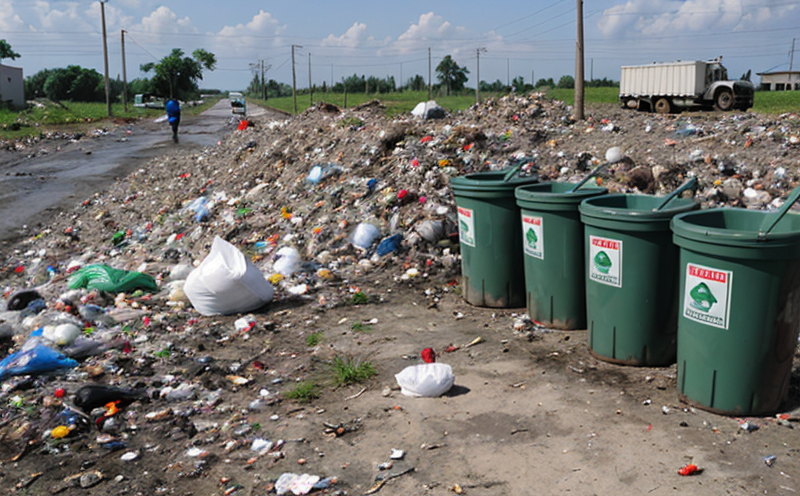EPA 8290 Dioxin Congeners in Solid Waste Test
The EPA 8290 method is a stringent analytical protocol designed to determine the presence and concentration of dioxin congeners in solid waste samples. This test is critical for environmental protection, compliance with regulations, and ensuring public health safety.
Dioxins are among the most potent synthetic chemicals known to science. They can be formed unintentionally during processes like municipal incineration or industrial combustion. These compounds pose significant risks if not properly managed and disposed of. The EPA 8290 test helps in identifying these pollutants, allowing for their controlled management and disposal.
Sample preparation is a crucial step that involves the collection of solid waste samples from various sources such as landfills, incineration facilities, or industrial sites. These samples are then processed to ensure they are representative of the entire batch being tested. This includes grinding, homogenization, and digestion steps which break down complex matrices into simpler forms.
Instrumentation used for this test typically includes high-resolution gas chromatographs coupled with mass spectrometers (HRGC-MS). These instruments provide precise separation and detection capabilities necessary to identify even trace levels of dioxin congeners. The methodology also employs derivatization techniques which enhance the sensitivity of the analysis.
The EPA 8290 protocol specifies a rigorous set of steps for sample preparation, extraction, clean-up, and quantification using chromatography/mass spectrometry (GC/MS). This ensures accurate measurement down to extremely low levels. The test's accuracy is further enhanced by the use of certified reference materials and careful attention to procedural controls.
The interpretation of results involves comparing measured concentrations against regulatory thresholds set forth by environmental agencies such as the EPA. Compliance with these limits indicates adherence to safety standards, while exceeding them may necessitate additional measures for mitigation or disposal.
Compliance with this testing protocol is essential not only for meeting legal requirements but also in fostering trust among stakeholders including regulators, communities surrounding facilities, and investors who value responsible environmental practices.
Applied Standards
| Standard | Description |
|---|---|
| EPA Method 8290 | This standard outlines the procedures for analyzing dioxins and furans in waste matrices. It specifies sample preparation, extraction techniques, cleanup methods, and detection limits. |
| ASTM D7364 | This method provides guidelines on the use of gas chromatography coupled with mass spectrometry for determining polychlorinated dibenzo-p-dioxins and furans in solid waste. |
Customer Impact and Satisfaction
- Ensures compliance with stringent environmental regulations.
- Reduces risks associated with dioxin exposure for workers and nearby communities.
- Aids in the management of hazardous waste materials responsibly.
- Supports continuous improvement efforts within manufacturing processes by identifying potential sources of contamination early.
Environmental and Sustainability Contributions
The EPA 8290 test contributes significantly to environmental sustainability through its role in preventing the release of harmful dioxins into air, soil, and water. By identifying these pollutants early on, it enables proactive measures that reduce their impact on ecosystems and human health.
Through accurate detection and reporting, this testing service helps facilities meet strict emission limits set by regulatory bodies like the EPA. This not only ensures compliance but also promotes a culture of environmental responsibility within industries dealing with waste management.





